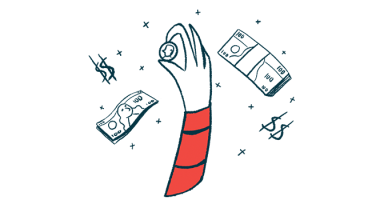Rare Case of CMT1A and Sodium Channel Myotonia in Chinese Man

A Chinese male presenting with decreased sensation, muscle weakness, and myotonia — the inability to relax his muscles — was diagnosed with two unlinked genetic disorders, Charcot-Marie-Tooth disease type 1A (CMT1A) and nondystrophic myotonia, according to a case study.
The same genetic conditions were identified in the individual’s father, although their presentation was less severe.
The study, “Coexistence of Charcot-Marie-Tooth 1A and nondystrophic myotonia due to PMP22 duplication and SCN4A pathogenic variants: a case report,” was published in BMC Neurology.
Charie-Marie-Tooth disease (CMT) is an inherited neurological condition affecting the peripheral nervous system, the nerves that control movement and sensation for the arms and legs.
CMT1A, the most common CMT type 1, is caused by an extra copy of the PMP22 gene that codes for a protein that is a component of the myelin sheath — the protective covering of nerve fibers — in peripheral nerves.
With an extra gene, the PMP22 protein is overproduced and cannot be processed correctly, resulting in increased amounts of nonfunctional protein, thereby disrupting the structure and function of myelin.
Nondystrophic myotonias (NDMs) are a group of inherited muscle diseases characterized by myotonia, muscle stiffness, and impaired physical activity. They are often caused by mutations in muscle cell membrane proteins, including SCN4A — a gene coding for a sodium channel protein that helps cells generate and transmit electrical signals for normal functioning.
The odds of inheriting both a sodium channel myotonia (SCM) — one of the three muscle conditions associated with SCN4A mutations — and CMT1A are very slim.
“Because the estimated prevalence of SCM is approximately 0.06 per 100,000 population and the calculated prevalence of CMT1A is in the range of 26:100,000 to 8:100,000, the theoretical chance of inheriting both diseases is extremely low,” the team noted.
Researchers in China have now described the case of a 29-year-old male who presented with both genetic conditions, along with his father who had the same mutations in PMP22 and SCN4A genes but a milder clinical presentation. The son is referred to as proband in the study, meaning the person serving as the starting point for the genetic study of a family.
The proband was the only child of unrelated parents, and his development during childhood was unremarkable.
As an adolescent, he displayed high-arched feet and began experiencing muscle stiffness in his hands and legs, especially in the mornings and after exercising.
During his 20s, he started to experience progressive leg weakness, with difficulty lifting the front part of his foot (drop foot) and the inability to lift his foot while walking due to muscle weakness (steppage gait). This progressed further in his late 20s, and he developed numbness in his upper and lower extremities.
At age 29, he experienced reduced ability to spread his fingers and had hand deformities characterized by finger curvature. He reported loss of sensation in his fingers and toes, along with poor finger control.
Myotonia was induced by hand grip and was relieved by tapping or massage for a few seconds. His symptoms were not worsened by cold exposure, and he never experienced muscle aches/pain or muscle paralysis. He was still walking with aid.
A neurological exam revealed drop foot and steppage gait, along with some hand and foot deformities due to muscle weakening, including pes cavus (characterized by high foot arch). He also had hand myotonia and upper and lower extremity weakness, including on his wrists, hands, fingers, ankles, and toes.
The patient had difficulty with a heel-to-toe walk and had decreased sensitivity to pain and vibration in his arms (from fingers to elbow) and in his legs (from toe to midcalf).
Electrical testing of his muscle function revealed that his upper and lower extremity muscles had some spontaneous electrical discharges, indicative of myotonia. Additionally, his motor nerve conduction velocities — the speed at which an electrochemical impulse, or message, travels down a nerve fiber — in his upper and lower extremities were decreased.
The patient’s father, a 57-year-old male, also presented with pes cavus. Some muscle reflexes in his arms and legs were absent, similar to his son. He also had some spontaneous electrical discharges in his upper left arm, but did not report symptoms of myotonia.
Additionally, the patient’s deceased paternal grandmother, paternal uncle, and his paternal uncle’s son all had pes cavus with no other reported neurological concerns.
The proband’s DNA was analyzed and a mutation in the SCN4A gene was identified, in which a glycine (one of the protein building blocks) was switched to an alanine at position 1306 of the protein (G1306A). Both the proband and his father had this same mutation in one of their copies of the gene. This mutation has been previously associated with milder forms of myotonia.
Additionally, a duplication of the PMP22 gene was found in both the proband and his father. Both the SCN4A mutation and the PMP22 duplication were absent in the proband’s mother.
“We thus demonstrated that both the duplication in PMP22 and the p.G1306A mutation in SCN4A in the proband were inherited from his father,” the researchers wrote.
Additionally, nerve biopsies indicated that the proband suffered from loss of myelin in the sural nerve, which provides sensation to the ankle, foot, and heel.
Overall, “we present a family with a combination of mutations in PMP22 and SCN4A, leading to the coexistence of two … inherited disorders: CMT1A and SCM,” the researchers concluded. “The clinical [features] in the proband showed the combined involvement of skeletal muscle and peripheral nerves. His father with the same mutations presented a much milder [clinical manifestation].”
The team hypothesized that the milder disease presentation in the proband’s father could potentially be explained by “unknown genetic [causes] or environmental modifiers … that could not be identified with our present methods.”








